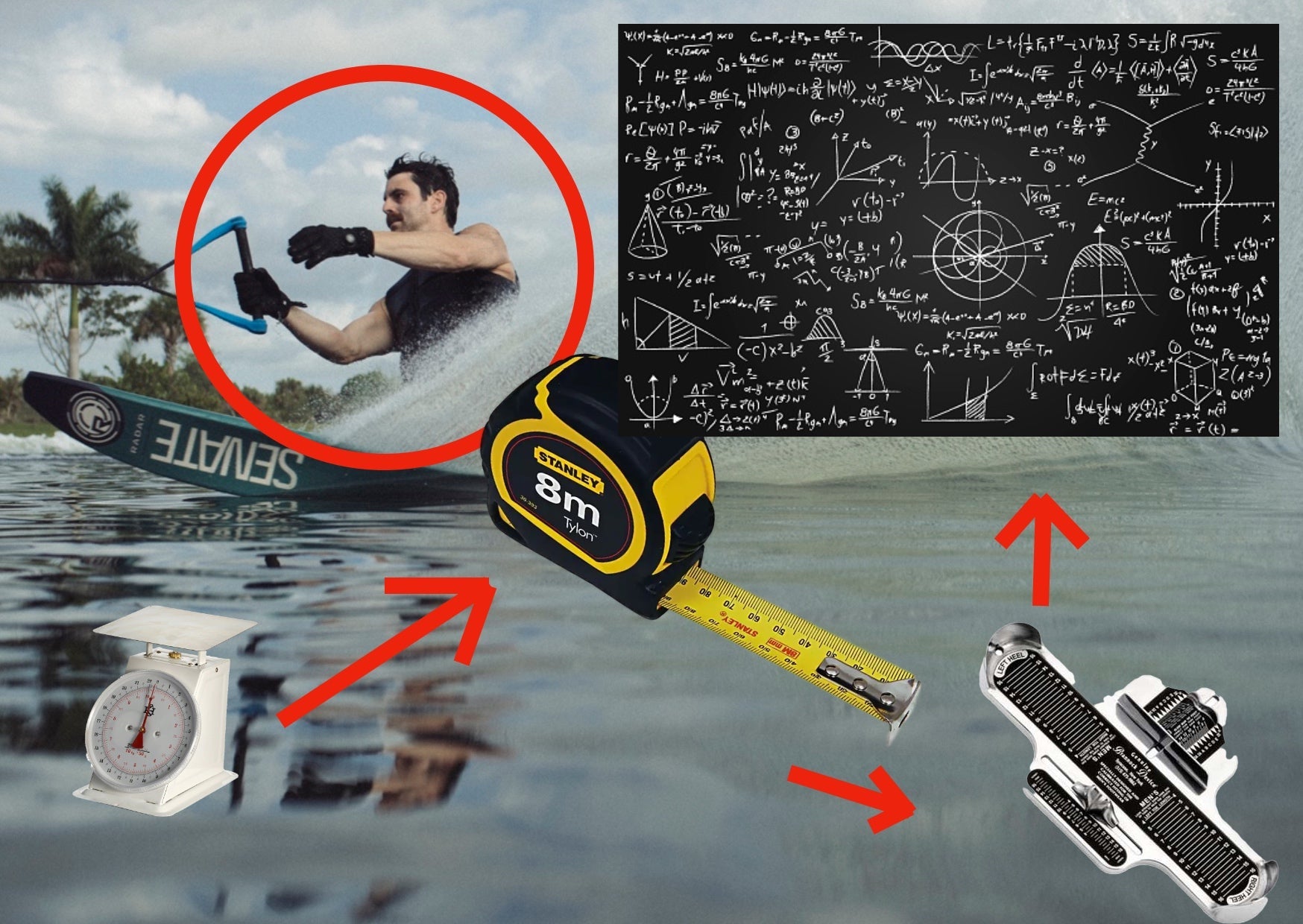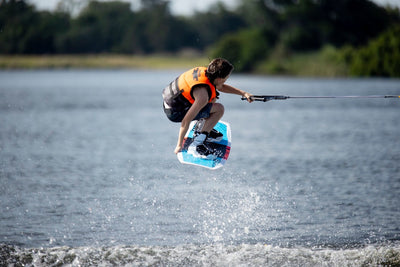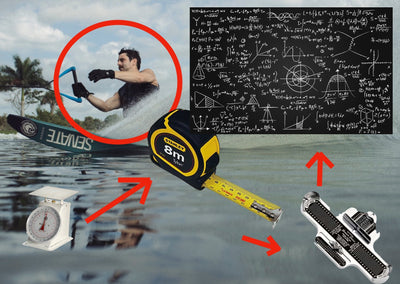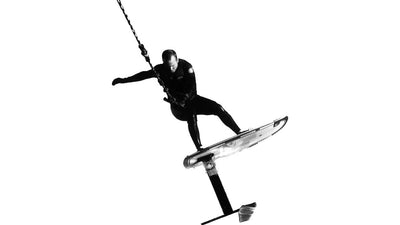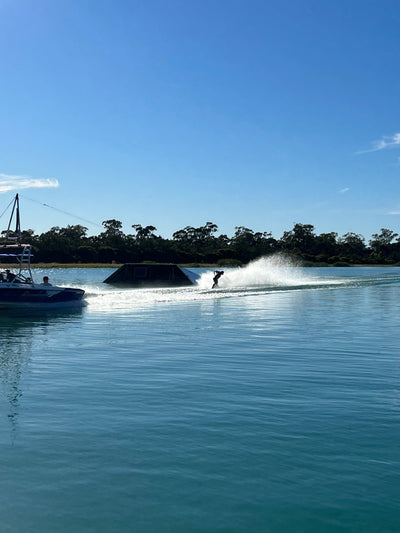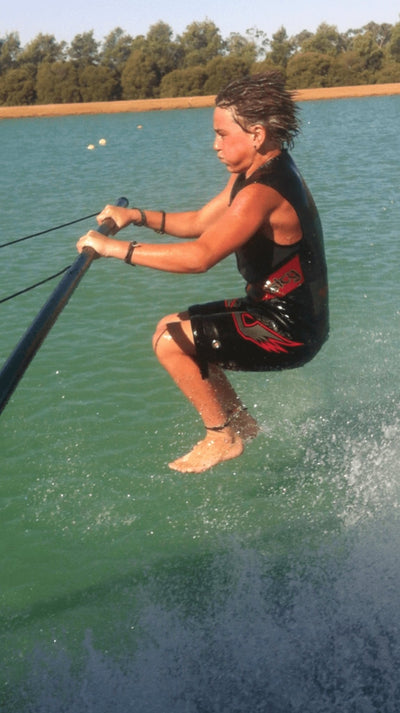Picking the right water ski is essential to your enjoyment of skiing but also to your progression. With the right size, the slalom ski will perform as intended and give you the best value for money. The wrong size waterski and it becomes a rodeo ride for the ages.
Below are some tips on picking the right size and guaranteeing your success.
1. It's not all about length!
Probably the biggest misconception out there is that your height is important. Maybe that's true if you’re sitting on a plane or playing some one on one basketball but for the most part, the best waterski for you is based on your weight.
If you’re really really tall, then consider a longer ski than suggested by your weight. If you’re super short then consider a slightly shorter ski. But 99 times out of a 100, to pick the perfectly sized slalom ski for you, consider your weight and the speed you ski at.
2. The Size Chart
These days, water skis come with a recommended size chart that also includes the speed range that you might typically perform at to line up with and pick the ski you need. We cannot recommend looking into this enough. However it comes with some caveats.
For one, it's important to note that a lot of size charts will say “Up to ….kg” or “Over….kg” and that's because either the smallest ski they make needs to look like it caters for all the small weight rangers or the biggest ski they make caters for all the biggest weight ranges.
Our suggestion is the 10k rule. If you’re within 10kg of the weight then you’re good to go. If you fit into the weight range then that's even easier.
3. Is Smaller Better?
Back in the day when Ubers were horse and cart and portrait mode involved paint and brushes, people wanted smaller skis to turn better and longer skis to cut harder. Those days have somewhat gone.
In essence a ski now uses much more of its edge to cut and is flexible or stiff in places to ensure a sharp turn. So stick to the recommended size charts and the weight ranges. That said you will probably notice that the better a ski is, the smaller the ski generally is. Which is to say, you might need a 68 in a beginners ski but a 67 in an advanced ski - size charts adjust for this and should keep you on the right length.
4. I am a beginner - Do I need a long ski?
If I had a shilling for every time I heard this I would have a real interest in where people were storing all these shillings and why I am not seeing them all the time instead of random days when people tell me they need a longer ski. At its most basic, surface area makes for an easier start and a more stable ski. But skis nowadays are wider than they used to be and make life a lot easier. Even advanced skis are so much easier to get up on that the key is to stick in your range.
5. A Ski for the whole family
The hardest thing to do is buy a ski for more than one person. Getting it to fit everyone’s needs is near impossible but it can be done with the smallest of compromises. I will provide some rules to stick by here.
- Make sure the ski is closer fitting to the bigger person. A smaller person can ride a bigger persons ski easier than a bigger person can ride a smaller ski
- Kids water skis are generally lighter and less buoyant. Having a kid ride a big adult ski will definitely hold their skill set back and make starts harder. Only do this if you don’t ski much or are just looking to start off. But a ski that rides and handles for a kid is soooooo much easier, more fun and challenging of their aspirations that they will ski a lot more and improve a lot faster.
- ‘Wide body - easy to get up on skis’ will be shorter, but that doesn’t mean they will then work for smaller people. If you’re buying a ski for everyone then a more traditional shape will work better.
6. Bindings matter
Getting the right size binding is so important. Without it you can’t have control so it’s almost not worth it. The key here is to remember that bindings almost always come in a size range. A binding that's 7 to 11 will mean that anyone with a size US 7 to a US 11 should fit in it. But in reality - that's a size 11 binding that tightens down a lot.
Our suggestion is this:
If you don’t ski much, get a binding that puts you in the lower range of its sizes. So if you’re a size 8, get the 7 to 11 As it will be easier to get on, still fit well and because it’s easy to get on you will probably ski more. If you ski a lot and are looking for control, get the binding on the tighter end of your range. So if you're a size 8 get the 5 to 8 binding. This will be tricker to get on but fit much more snug and give you the ultimate control.
Well good luck. If after reading this you still need some help. Be sure to contact us here. With our experience and knowledge of the industry our advice will definitely help and may be the difference in your skiing ability, enjoyment and love for years to come.


